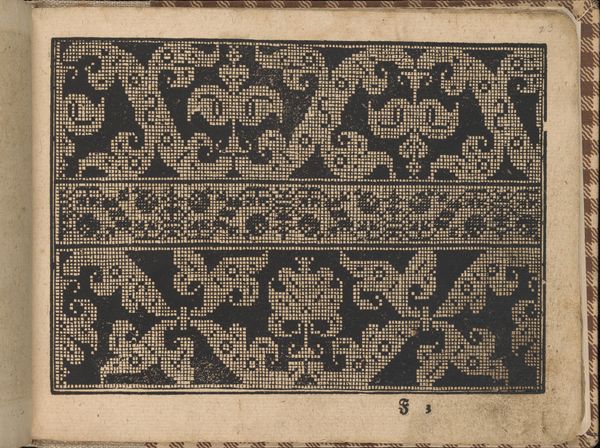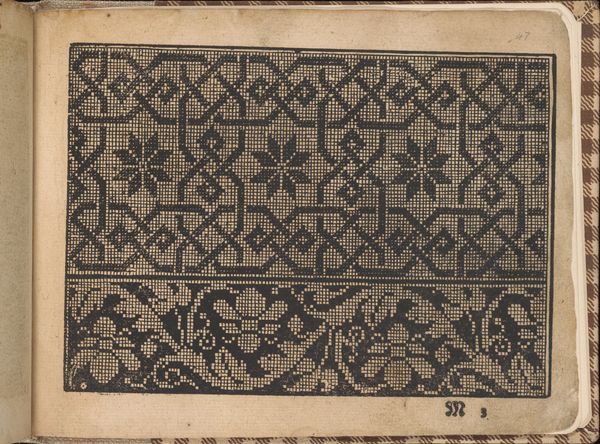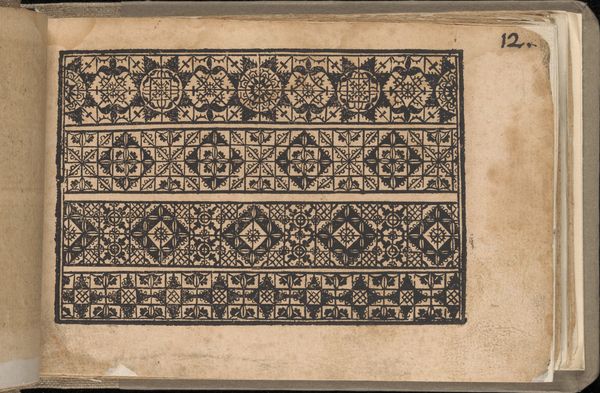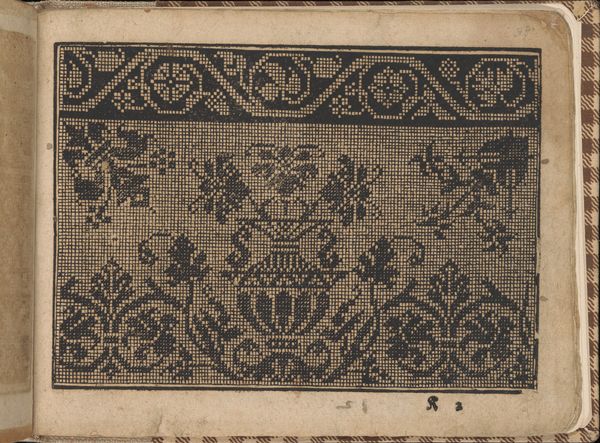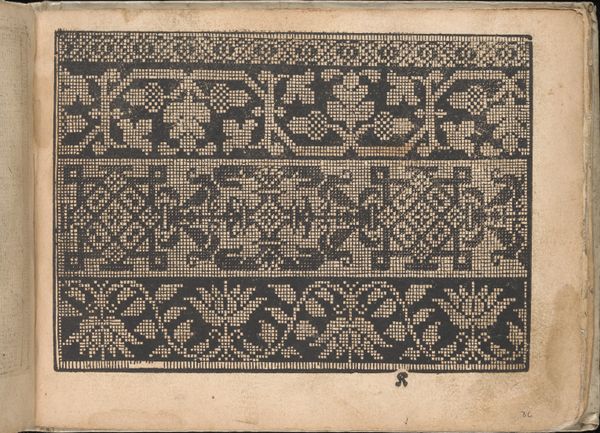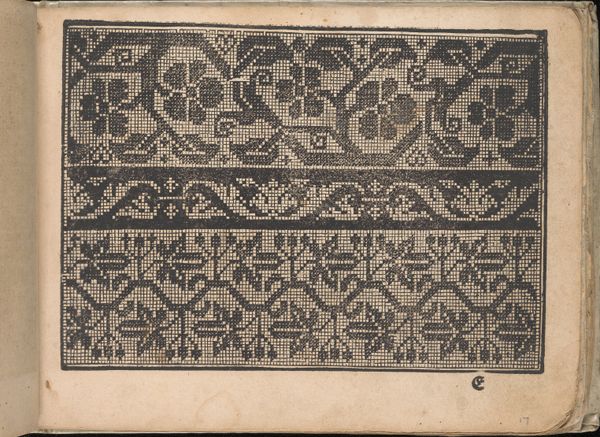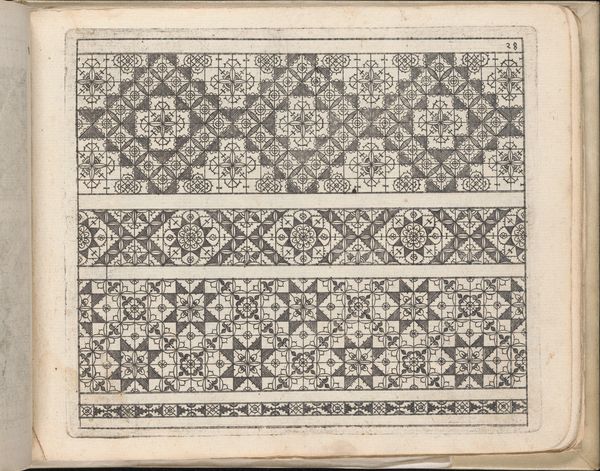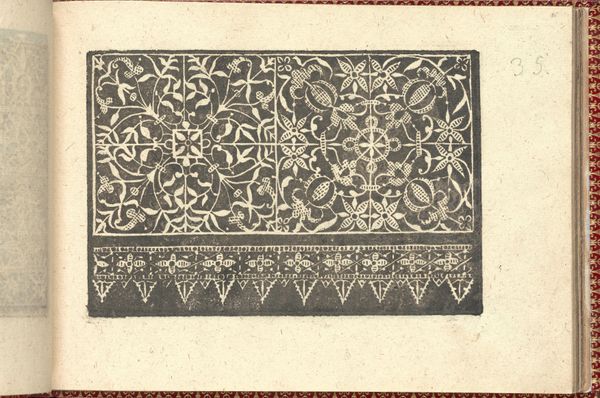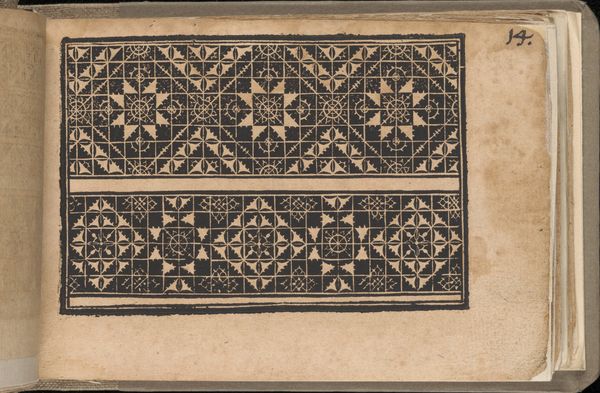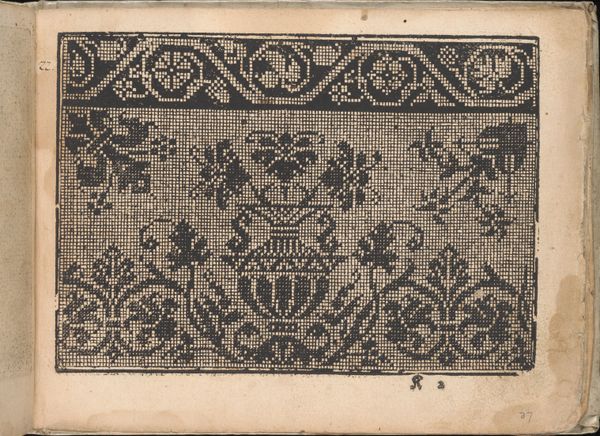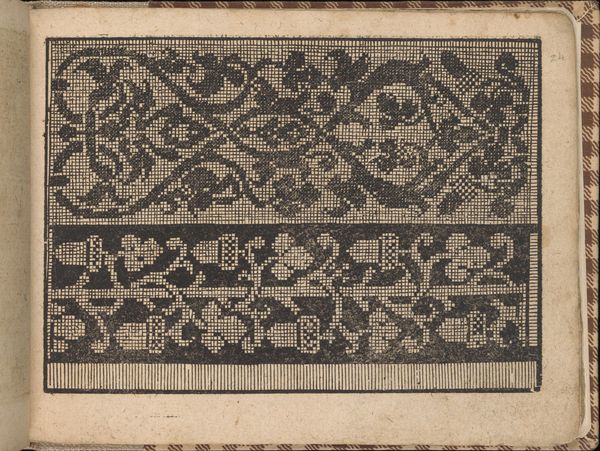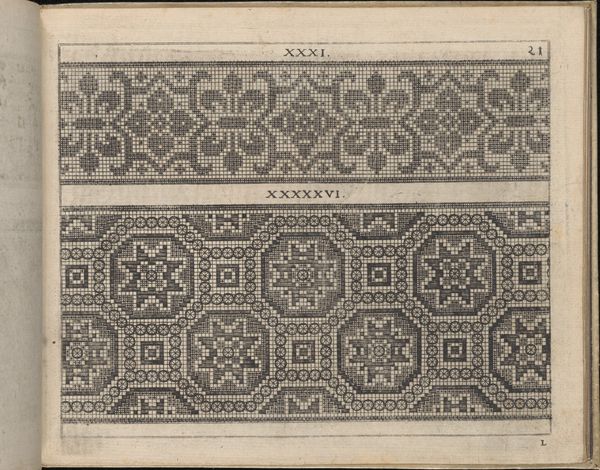
Illustrations from Schön Neues Modelbuch, plate 95 from Woodcuts from Books of the XVI Century c. 1597 - 1937
0:00
0:00
print, paper, woodcut
# print
#
sculpture
#
paper
#
woodcut
Dimensions: 119 × 151 mm (image); 137 × 167 mm (sheet)
Copyright: Public Domain
Curator: I find this page intensely fascinating. Here we have Plate 95, an illustration from Johann Sibmacher's "Schön Neues Modelbuch," part of a series of woodcuts from books of the 16th century, though this particular print dates from around 1597 to 1937. Editor: Immediately, I’m drawn to its rather muted, almost pixelated aesthetic. It gives me a strange feeling of both ancient craft and nascent digital art. The black and white really emphasizes the repetition. Curator: Precisely! These Modelbuch patterns served a very practical function: they were guides for needleworkers, embroiderers, and other artisans crafting textiles. Editor: So, each shape, each choice, was steeped in symbolic meaning, acting almost like a coded visual language of status and belief. Were particular motifs reserved for certain classes, professions, or even genders? Curator: Absolutely. The act of creation through the patterns themselves becomes an expression of cultural and social identity, even power dynamics. It highlights the ways women's creativity in textile arts have been historically dismissed as merely domestic or decorative rather than meaningful artistic labor. Editor: But how remarkable to think these same symbols woven into garments or tapestries spoke volumes – reinforcing traditions, signaling allegiances, perhaps even subtly challenging norms. Curator: And that these patterns were disseminated and interpreted across generations. The Modelbuch acts almost like a manual for enacting societal narratives through textiles. The woodcut medium itself suggests a process of reproduction and transmission. Editor: A manual that transcended borders as pattern designs migrated and mingled through trade and cultural exchange, leading to both adaptation and appropriation. I suppose these repeating patterns reflect both structure and fluidity. Curator: Exactly. The act of viewing itself brings forth this visual inheritance as patterns persist and evolve in social, political, and creative spheres. The piece becomes a lens through which we explore how visual art is intertwined with the fabric of society. Editor: Seeing these geometric patterns now, it’s amazing how much cultural weight they could bear. The history here has shaped something new even after all these centuries.
Comments
No comments
Be the first to comment and join the conversation on the ultimate creative platform.
